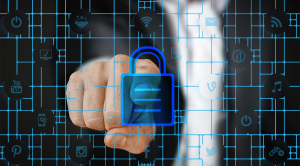15 Mistakes That Could Risk Data Hacking And How To Prevent It
Your critical data plays a vital role in the growth and day-to-day operations of your business. And if not properly protected, they can easily fall into the sights of attackers and expose important information. Here are 15 common mistakes that can get your data hacked and ways to prevent them to keep your system safe.
1. Use a Weak Password
Simple and easy-to-guess passwords are an open door to attack. Use strong passwords, including uppercase, lowercase, numbers, and special characters to increase security
2. No Software Update
Security vulnerabilities are usually patched after each update. Skipping software updates can facilitate intrusions.
3. Lack of a Clear Privacy Policy
The privacy policy helps educate employees on how to handle important data and limit access to each person.
4. No Staff Training on Information Security
Employees who do not know how to detect and avoid security hazards will be a "weak link" in the security system.
5. Bypass Data Backup
Regular data backup helps to quickly recover when data is hacked or lost.
6. Don't Use Data Encryption
Data encryption ensures that even if data is stolen, the information cannot be easily read by an attacker.
7. No Intrusion Technical Test
Improper installation and configuration of intrusion prevention can expose the back door to an attacker.
8. Open Pop-ups and Unknown Emails
Unknown links in emails and pop-ups may contain malicious code or viruses.
9. Using Unsecured Public Networks
Connecting to an unsecured public network can be a good opportunity for hackers to gain access to your system.
10. No Security Integration Testing For Third Party Applications
Third-party applications often have security holes that can make your system vulnerable.
11. Do Not Track Invalid Login Activity
Invalid login activity tracking helps you detect suspicious activity early.
12. Insecurely Sharing Login Information
Do not share login information via email or unencrypted messages.
13. Don't Use Web Security Tools
Web security tools help detect and prevent remote attacks.
14. Do Not Track Cloud Services
If using a cloud service, carefully monitor access and activity in your account.
15. Ignore Safety Warnings
Security warnings often appear indicating a security risk. Do not ignore them but consider and respond promptly.
The mistakes above can easily lead to hacking and disclosure of important information. To keep your data safe, follow basic security principles and take appropriate precautions.










